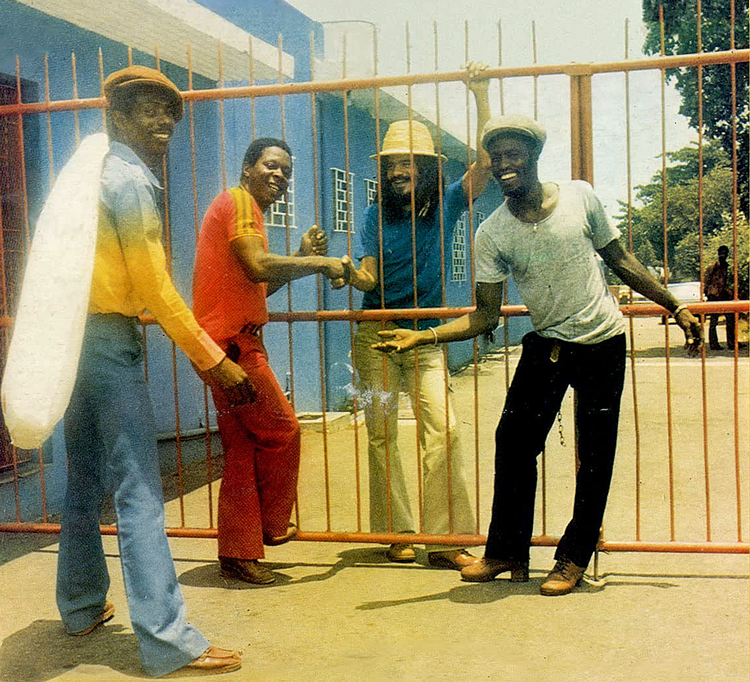Reggae was the music that opened up my ears to the wider world of sounds rife for exploring, and I always savor any reminder of what made it so. Two new releases from Doctor Bird, a UK-based imprint specializing in reissues of Jamaican music that originally came out on the venerable Trojan Records label, not only take me back to that golden age of reggae revelation but add new insight to it as well.
The Heptones remain among the most enduring of the many harmony trios that formed in mid-1960s Jamaica, when ska slowed to rocksteady and singers had greater space to emote.
Like so many of the island’s foundational artists, The Heptones got their start at Studio One, employed not only as singers and players but also in the everyday running of Clement Dodd’s music business. Like many of their peers as well, they seemed poised for potential crossover success in the wake of Bob Marley’s rise to worldwide fame. Fronted originally by Leroy Sibbles with Barry Llewellyn and Earl Morgan harmonizing, the trio excelled with love songs and harder sentiments that came about later when roots reggae burned brightest.

Sibbles’ 1978 departure for a solo career could have been the end of the group, but Dolphin “Naggo” Morris, a singer and hitmaker of his own, took over the lead and the Heptones carried on. Two albums that followed the transition comprise the double CD set Better Days & King of My Town (Doctor Bird, 2022). Both were produced by an increasingly skilled Niney the Observer, and both showed the Heptones had lost no fire as a vocal threesome. Morris was strong and assured in the lead, a soulful topper to Llewellyn and Morgan’s rich harmonies.
Better Days is the more mainstream-aiming of the pair, kicking off with covers of “Suspicious Minds” and “Crystal Blue Persuasion” but making room for conscious numbers like “No Bread on My Table” and “God Bless the Children” along with offerings for lovers. A generous 10 dubs round out the first disc, giving the all-star crew of accompanying players (Sly Dunbar, Fully Fullwood, Bingy Bunny and Ansel Collins among them) their full due. King of My Town has a stronger militant feel in its riddims and more chant-like vocals, though it has a lighter side as well. Thus, a deep cut like “African Child” finds the Heptones blending voices as expertly as on a cover of “A Hard Day’s Night.”
CD number two additionally sweetens its deal with some extended mixes, including the classic “Book of Rules.” That the Heptones were able to come back with top quality material after a major personnel change is a testament to their greatness, and these discs capture it abundantly.
Call it a precursor to rap or a uniquely Jamaican phenomenon that still mightily imprints the island’s musical output. Either way, the deejay style – the art of chanting, chatting, scatting, rhyming and “toasting” over existing riddims -gave birth to a vast reggae subgenre. Even at 44 selections, the double CD set Top Ranking DJ Session Volumes 1 & 2 (Doctor Bird, 2022) is barely a blink. But oh, what a blink.
Prolific producer Joe Gibbs and his engineer Errol Thompson recorded many of the absolute best microphone wielders, including such heavy hitters as U Roy, I Roy, Big Youth, Dillinger and Ranking Joe alongside lesser known but just as vocally nimble names like Jah Grundy and Weedy Dread.

The best deejays created tongue-tripping lyrical flows that could be topical, satirical, whimsical, carnal or cultural in nature, all the while deftly riding repurposed riddim tracks already familiar from the sung hits they’d bedded. Often the voice functioned as an additional instrument, depending on how the deejay’s particular tones matched the melody.
Originally recorded between 1977 and 1979, the recordings on the two discs are rounded out by a batch of bonus tracks. Thus, standouts are many. Too many to mention here, but just to scratch the surface, the playfully ominous tones of I Roy on “Trust No Shadow After Dark,” Big Youth’s cry-in-the-wilderness delivery on “Equal Rights Style,” the breathy urgency employed by Shorty the President throughout “Too Much Gal Out a Street,” Kojak sassing up “Different Style,” Prince Hammer extolling the virtues of “Orthodox Rock” and Trinity mashing up “Hog and Goat” in suitably animalistic style are among the riches. Well over two hours long, the volumes are a wild and wicked collection of the highest order, including many tracks never before on CD.
Both of these releases include extensive, exhaustively researched liner notes that contain all you could want to know about the music therein, plus vintage photos and album label reproductions. But beware-attempting to read said notes while listening is tricky because you’ll find yourself wanting to move and groove to all the wonderful music at the same time. Consider these sets to be unequivocal musts for lovers of classic reggae or anyone wanting to discover more about it.



Fantastic article, the opening lines mirrors my own experience as a 15 year old in 1980. Reggae still affects me the same way now as it did all those years ago..
Thanks for your comment. The feedback is appreciated; I’m too close to my work to know if it’s any good. Glad to hear about your shared experience as well. I love music from all around the world, but reggae is where it began for me. Big up.